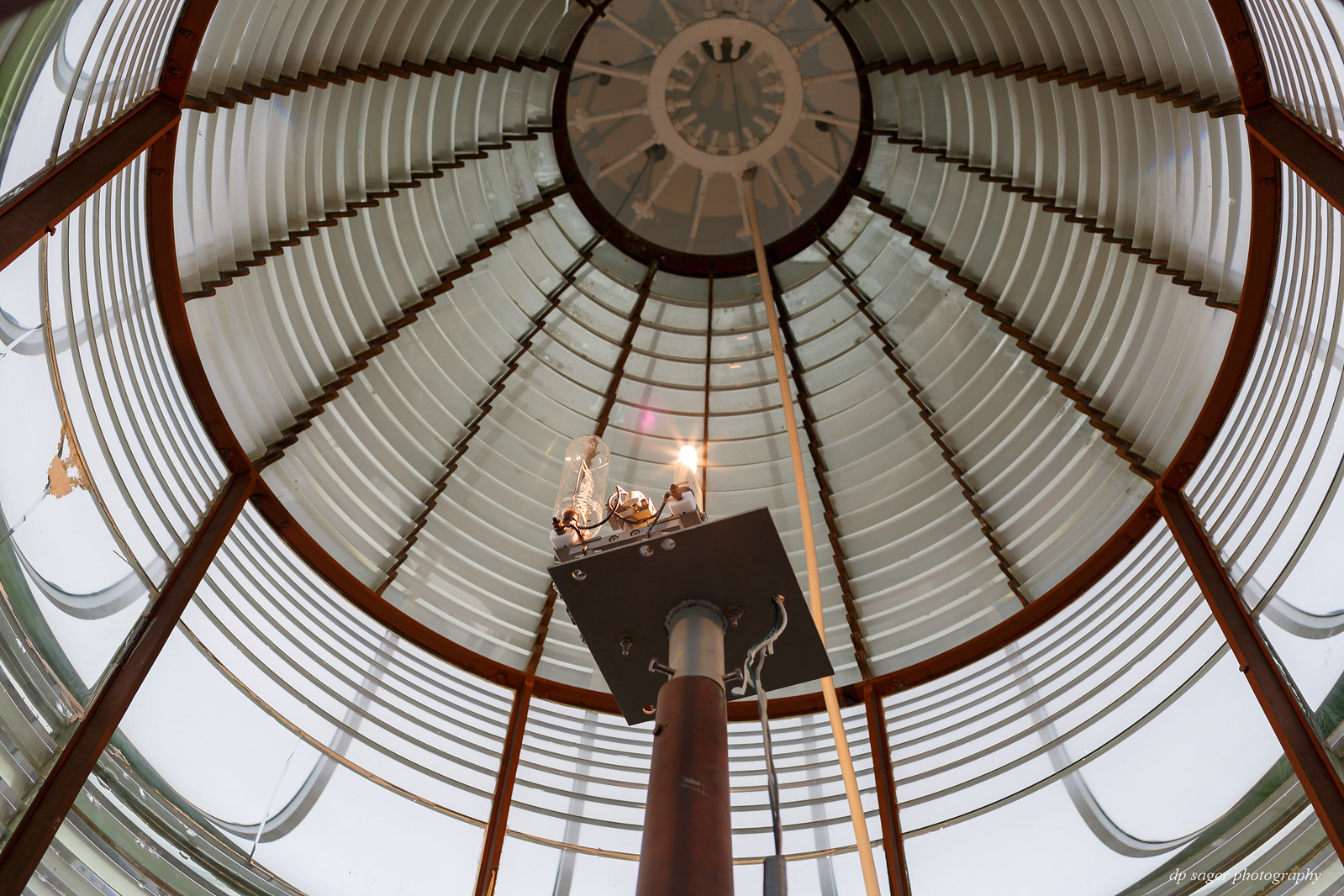Looking up at FLA Lighthouses (mostly)
Jun 25, 2019 09:40:52 #
Most of the lights in the United States were built and maintained by the Coast Guard (since 1939) and its predecessors, the United States Lighthouse Service (1910-1939) and the United States Lighthouse Board (1852-1910). The United States Lighthouse Board was created in March 1851, when the U.S. Congress passed "An Act Making Appropriations for Light House, Light Boats, Buoys, &c."
As their importance to navigation has declined and as public interest in them has increased, the Coast Guard has been handing over ownership and in some cases responsibility for running the lighthouse to other parties, under the National Historic Lighthouse Preservation Act of 2000.
St Augustine Lighthouse by Paul Sager, on Flickr

The St. Augustine Light Station is a private-aid to navigation and an active, working lighthouse in St. Augustine, Florida. The current lighthouse tower, original first-order Fresnel Lens, and the Light Station grounds are owned by the St. Augustine Lighthouse & Maritime Museum, Inc., a not-for-profit maritime museum.
St Augustine Lighthouse

The Loxahatchee River Historical Society operates the Jupiter Inlet Lighthouse and Museum. The lighthouse sits at the junction of the Indian River and Jupiter Inlet on the Atlantic Coast of central Florida.
Juniper Inlet Light

The St. Simons Island Light is stationed on the southern tip of St. Simons Island, Georgia. The light guides ships into St. Simons Sound and warns of the many sandbars in the area. In May 2004, ownership of the lighthouse was transferred to the Coastal Georgia Historical Society under the National Historic Lighthouse Preservation Act.
St. Simons Lighthouse Museum

Tybee Island Light is stationed next to the Savannah River Entrance, on the northeast end of Tybee Island, Georgia. It is one of seven surviving colonial-era lighthouse towers, though highly modified in the mid 1800s. The Tybee Island Historical Society took possession of the light station in 2002 under the National Historic Lighthouse Preservation Act.
Tybee Island Light Station

The Ponce de Leon Inlet Light is located at Ponce de León Inlet in Atlantic Coast of central Florida. At 175 feet (53 m) in height, it is the tallest lighthouse in Florida and one of the tallest in the United States. Restored by the Ponce de Leon Inlet Lighthouse Preservation Association, the lighthouse became a National Historic Landmark in 1998.
Ponce de Leon Inlet Lighthouse

French physicist and engineer Augustin-Jean Fresnel is credited with the development of the multi-part Fresnel lens for use in lighthouses. His lens design from the 1820's increased the luminosity of the lighthouse lamp by a factor of 4 and his system is still in common use.
Ponce de Leon Inlet Lighthouse

The images are sized to fill your wide-screen display. Try using <F11> to maximize your browser window for the full effect. If the images overshoot your display, such as a laptop, just click on the image or the URL link and they'll resize to your screen from the host Flickr site. You can click a bit further into the image details on the Flickr page, if desired. EXIF data is available from the host Flickr pages as well. On the Flickr site, use your <L>key for Large and the <F11> for the full-screen.
If the images are not filling your widescreen display due to recent UHH changes, follow this link and update your UHH profile: https://www.uglyhedgehog.com/t-572300-1.html
As their importance to navigation has declined and as public interest in them has increased, the Coast Guard has been handing over ownership and in some cases responsibility for running the lighthouse to other parties, under the National Historic Lighthouse Preservation Act of 2000.
St Augustine Lighthouse by Paul Sager, on Flickr

The St. Augustine Light Station is a private-aid to navigation and an active, working lighthouse in St. Augustine, Florida. The current lighthouse tower, original first-order Fresnel Lens, and the Light Station grounds are owned by the St. Augustine Lighthouse & Maritime Museum, Inc., a not-for-profit maritime museum.
St Augustine Lighthouse

The Loxahatchee River Historical Society operates the Jupiter Inlet Lighthouse and Museum. The lighthouse sits at the junction of the Indian River and Jupiter Inlet on the Atlantic Coast of central Florida.
Juniper Inlet Light

The St. Simons Island Light is stationed on the southern tip of St. Simons Island, Georgia. The light guides ships into St. Simons Sound and warns of the many sandbars in the area. In May 2004, ownership of the lighthouse was transferred to the Coastal Georgia Historical Society under the National Historic Lighthouse Preservation Act.
St. Simons Lighthouse Museum

Tybee Island Light is stationed next to the Savannah River Entrance, on the northeast end of Tybee Island, Georgia. It is one of seven surviving colonial-era lighthouse towers, though highly modified in the mid 1800s. The Tybee Island Historical Society took possession of the light station in 2002 under the National Historic Lighthouse Preservation Act.
Tybee Island Light Station

The Ponce de Leon Inlet Light is located at Ponce de León Inlet in Atlantic Coast of central Florida. At 175 feet (53 m) in height, it is the tallest lighthouse in Florida and one of the tallest in the United States. Restored by the Ponce de Leon Inlet Lighthouse Preservation Association, the lighthouse became a National Historic Landmark in 1998.
Ponce de Leon Inlet Lighthouse

French physicist and engineer Augustin-Jean Fresnel is credited with the development of the multi-part Fresnel lens for use in lighthouses. His lens design from the 1820's increased the luminosity of the lighthouse lamp by a factor of 4 and his system is still in common use.
Ponce de Leon Inlet Lighthouse

The images are sized to fill your wide-screen display. Try using <F11> to maximize your browser window for the full effect. If the images overshoot your display, such as a laptop, just click on the image or the URL link and they'll resize to your screen from the host Flickr site. You can click a bit further into the image details on the Flickr page, if desired. EXIF data is available from the host Flickr pages as well. On the Flickr site, use your <L>key for Large and the <F11> for the full-screen.
If the images are not filling your widescreen display due to recent UHH changes, follow this link and update your UHH profile: https://www.uglyhedgehog.com/t-572300-1.html
Jun 25, 2019 09:52:56 #
Great set!
(When I lived in Florida, I visited the Ponce Inlet light regularly.)
(When I lived in Florida, I visited the Ponce Inlet light regularly.)
Jun 25, 2019 10:02:21 #
Paul,
I appreciate the historical information on lighthouses. My wife and I are planning a trip to Portland Maine in October 2020 to see five lighthouses in that area. Do you have any links you could recommend that I may have missed that would be helpful in planning our trip?
I appreciate the historical information on lighthouses. My wife and I are planning a trip to Portland Maine in October 2020 to see five lighthouses in that area. Do you have any links you could recommend that I may have missed that would be helpful in planning our trip?
Jun 25, 2019 10:12:33 #
Jun 25, 2019 10:14:43 #
ejones0310 wrote:
Paul,
I appreciate the historical information on lighthouses. My wife and I are planning a trip to Portland Maine in October 2020 to see five lighthouses in that area. Do you have any links you could recommend that I may have missed that would be helpful in planning our trip?
I appreciate the historical information on lighthouses. My wife and I are planning a trip to Portland Maine in October 2020 to see five lighthouses in that area. Do you have any links you could recommend that I may have missed that would be helpful in planning our trip?
Thank you Eric! I've only traveled through Portland, ME, but have never been there except for driving in and of the airport. My travels to the several lighthouses in FL and GA in Fall 2018 were captured almost entirely with an EF 35mm f/1.4L and a full-frame EOS 5DIII. I'd plan to have / use a lens that covers 24-70mm at f/2.8 (for indoors) for the lighthouses. You might search Flickr and / or Google for the candidate places you plan to visit and double-check the focal lengths used.
Jun 25, 2019 10:14:55 #
Longshadow wrote:
Silly me! I almost always go to Wikipedia first, but for some reason I bypassed it this time. Thanks for steering me back on track.
Jun 25, 2019 10:16:07 #
Longshadow wrote:
Great set!
(When I lived in Florida, I visited the Ponce Inlet light regularly.)
(When I lived in Florida, I visited the Ponce Inlet light regularly.)
Thank you Bill! The Ponce Inlet lighthouse proved to be one of my favorites.
Jun 25, 2019 11:51:15 #
CHG_CANON wrote:
Most of the lights in the United States were built... (show quote)
Glad many of these are being preserved!
Jun 25, 2019 15:00:15 #
#1, 2 and 3 are worth studying for their hugely effective (IMO) compositions. #3 in particular is a delightful surprise because I'd never have thought to shoot landscape aspect. Negative space and color contrasts are wonderful also.
Jun 26, 2019 04:57:22 #
Jun 26, 2019 05:51:30 #
Jun 26, 2019 07:06:18 #
Thank you Karen, Linda, Bob, Jack! Most of these were captured using a 35mm prime. Only the Juniper Inlet light was closed when I arrived at dusk and shot with a 135mm from a tripod in a parking lot outside the closed fence to the grounds. Glad you enjoyed.
Jun 26, 2019 07:08:51 #
Jun 26, 2019 07:27:23 #
Jun 26, 2019 07:27:46 #
A wonderful set Paul with some unique perspectives and a very informative narrative. Looks like it was a beautiful day.
-Doc
-Doc
If you want to reply, then register here. Registration is free and your account is created instantly, so you can post right away.








